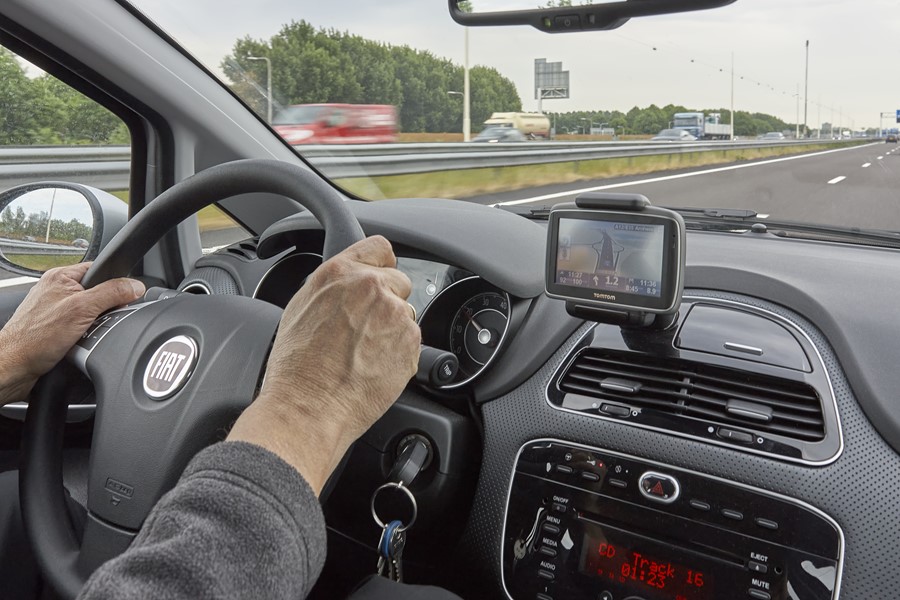New functionalities and upholstery materials for the car of the future’s dashboard
Graphene Flagship Partner SPAC Spa is developing new steering wheels and glove boxes with graphene-based materials, as part of the Spearhead Project G+BOARD.
Graphene Flagship Partner SPAC Spa is an Italian medium-sized enterprise with expertise in producing high-performance, technical textiles for automotive, upholstery, sports applications and other sectors. Founded in 1973, SPAC has a production plant for coated polyvinyl chloride (PVC) and polyurethane (PU), and a division for the lamination of technical textiles.
SPAC joined the Graphene Flagship Spearhead Project G+BOARD to build parts of cars’ passenger compartments with graphene and related materials. G+BOARD’s researchers aim to remove most of the copper wiring currently used in dashboards, to reduce the car’s weight and production steps, while improving aesthetics, disposal and recyclability.
Other Graphene Flagship Partners involved in G+BOARD are Fiat-Chrysler Automobiles (FCA), the project leader, Avanzare Innovacion Tecnologica SL in Spain, Bioage Srl, Nanesa Srl, National Research Council (CNR), Centro Ricerche Fiat S.C.p.A. (CRF) in Italy, the Foundation for Research and Technology Hellas (FORTH) in Greece and the University of Cambridge in the UK.
We interviewed SPAC R&D Manager Claudio Farenzena to find out why they decided to join the Graphene Flagship, and to learn about their progress on the development of new components for the car’s dashboard.
What are you working on within the Graphene Flagship’s G+BOARD Spearhead Project?
We are developing a steering wheel with heating capabilities and a new glove box that opens without applying force on the compartment handle. Our goal for both projects is to create upholstery materials with new properties, taking into account FCA’s requirements, specifications and standards.
What can tell us about the steering wheel project?
We are building a new component capable of heating the driver's hands. Today these heating elements are built with the traditional method of resistive wire coils. However, when a wire breaks, the system no longer works. Also, these wires are relatively bulky: they can be visible or perceptible through the external material. Most manufacturers try to circumvent these issues by inserting expanded materials, such as ethylene-propylene diene monomer (EPDM) or other polymers, in the steering wheel. However, this strategy is not ideal, as it complicates the assembly of the steering wheel and limits its thermal efficiency.
On the contrary, we are developing almost completely wireless components: we plan to remove most copper wires, and take advantage of graphene’s thermal and electrical properties. We will keep only the connection ends, which can be easily hidden in less sensitive areas of the steering wheel. Besides, this new steering wheel will warm up thanks to a single radiating surface, whose performance will not be affected by the presence of cuts or holes.
And the glove box project?
We are working on a touch-sensitive sensor, which exploits the electrical charge that accumulates in response to applied mechanical stress. In this case, when someone touches the sensor, an electric current is generated; this is detected by the electronics, which drives an actuator that opens the drawer. Applying a novel laser writing technology, we draw buttons and electrical connections that are not visible at first, but become perceptible when the driver or the passenger puts their hand close to the glove box. Studies conducted by various Original Equipment Manufacturers (OEMs) have shown that this is a trend that will characterise future cars’ dashboards
How is your progress so far?
For the steering wheel, we are working together with Graphene Flagship Partner Nanesa in Italy choosing suitable polymers for the thermoresistor. In collaboration with the G+BOARD partners, we are creating composites with various graphene and graphene oxide formulations, while complying with our industrial parametres. We are looking for the best graphene-based formulation to produce a film with homogeneous properties and required thickness.
For the glove box, we worked with the G+BOARD partners to identify suitable graphene-based materials and polymers. We need an insulating mix, which will be selectively modified under the action of a laser. The traces left by the laser become the conductive tracks of a printed circuit.
Does the Graphene Flagship bring any benefit to your company?
SPAC is a FCA supplier for steering wheel cover materials. This is the first large-scale project that we are developing together with the other partners. By joining the Graphene Flagship, we can fruitfully interact with other researchers, and leverage our skills, with huge opportunities to boost technological growth. The Graphene Flagship enables us to bring new ideas to life and acquire great knowledge on these new types of materials.
By joining the Graphene Flagship, we can fruitfully interact with other researchers, and leverage our skills, with huge opportunities to boost technological growth.
R&D Manager at Graphene Flagship partner SPAC

Graphene-based materials will change the steering wheels and glove boxes in the cars of the future.




